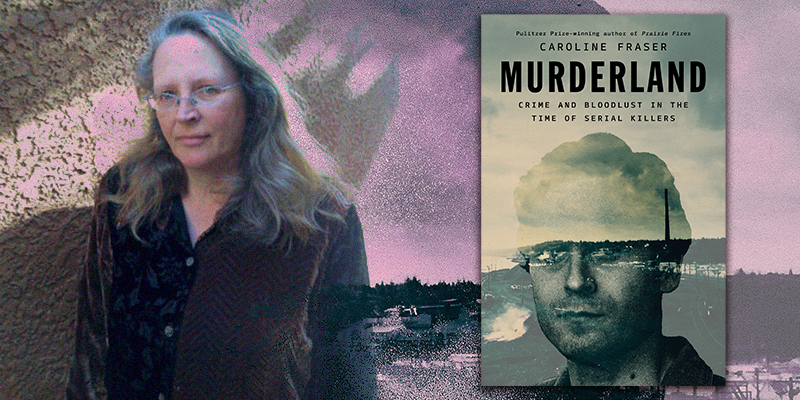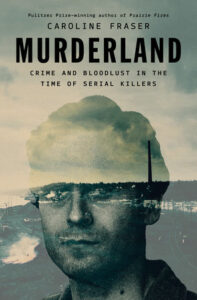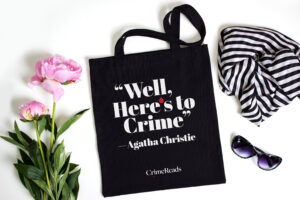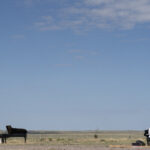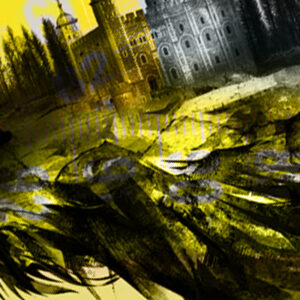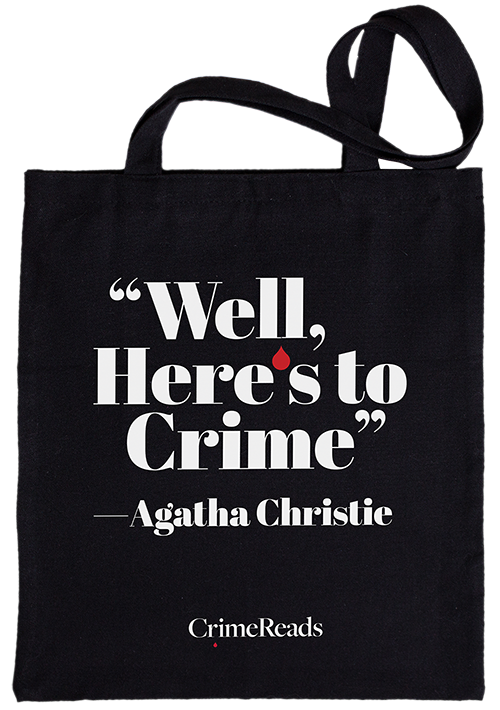Caroline Fraser won the Pulitzer Prize for the biography Prairie Fires: The American Dreams of Laura Ingalls Wilder, then turned her creative and capable hand towards an altogether different subject matter: the proliferation of serial killers at a time of ubiquitous lead poisoning, and the rapid decline of both environmental lead pollution and extreme violence against strangers. In particular, Frasier zooms in on the Pacific Northwest as her horrifying case study. I had the privilege of asking her a few questions about the book and its many shocking surprises.
Murderland: Crime and Bloodlust in the Time of Serial Killers is now available from Penguin Press.
Molly Odintz: In a nutshell, can you go through the book’s central thesis? How did you go about showing the connections between lead poisoning from gasoline and heavy metal poisoning and the rise of violent crime?
Caroline Fraser: The book begins in the Pacific Northwest in the 1960s & 1970s and shifts between several storylines: The childhood and lethal careers of several serial killers (including Ted Bundy and Gary Ridgway who grew up in Tacoma); the history and activities of the infamous Tacoma smelter, owned by the Guggenheim family’s American Smelting and Refining Company (ASARCO); and my childhood growing up on Mercer Island.
The thesis that emerges knits together the possible effects of the smelter’s emissions, which polluted a thousand square miles of Puget Sound with lead and arsenic, among other things, and the effects this may—or may not—have had on the rise in crime in Tacoma and the Northwest. Lead exposure in children can cause a wide array of behavioral and neurological effects, including impulsivity, aggression, and violence, that become particularly notable in young adulthood. Virtually everyone born between the late 1940s and 1950s and the 1980s was exposed to emissions from leaded gas, but the folks in the Puget Sound area got extra, as it were, from the smelter.
Eventually, I expand my focus to other areas around the West, such as El Paso, Texas, which had another ASARCO smelter, where Richard Ramirez, the so-called “Night Stalker,” hailed from. He became notorious for killing people in Los Angeles, mainly, but grew up in El Paso, around five miles from the smelter’s smokestack and right next to the heavily-traveled (and polluted) Interstate 10 corridor.
It’s a big nutshell.
MO: So, this book is an enormous research effort, a paradigm-shifting synthesis and a massive overhaul of how we conceptualize mid-century crime. How did you go about putting together so many disparate forms of research?
CF: I wish I could tell you that I had a grand scheme, but the project evolved more organically, not to say chaotically. I began with the timeline of Ted Bundy’s life and added in the smelter and began hanging the smelter history and other crimes and criminals off of that. I was writing first during Covid and relying on newspaper archives and other online sources but was then able to make research visits to Tacoma to visit the extraordinary Northwest Room at the Tacoma Public Library and other historical archives.
MO: Why did you hone in on the PNW? What was different about it, or about its killers?
CF: I was born in Seattle and grew up on Mercer Island, so I began with the question that’s bedeviled the region for decades: Why were there so many serial killers in the Northwest? I was curious to investigate that idea and to see if there was anything to it or whether it might be an urban legend of sorts. In the end, I had so much crime and so many criminals, I couldn’t really include them all.
Having seen the prevalence of smelters in many American cities from the early 1900s through to the 1990s, I now assume that you could collect similar stories from Philadelphia, say, or Pittsburgh, or Chicago.
MO: That bridge. Tell us about that Seattle bridge. I will never drive on it, by the way.
CF: The floating bridge between Seattle and Mercer Island, which was the last stretch of I-90 and connected Seattle to the East Side and beyond, played a huge role in my life and the lives of everyone who lived on the Island or commuted across it. It opened in 1940 and quickly became clogged with traffic: It featured only two lanes in each direction. It had a major engineering flaw—the so-called “bulge,” a mechanism to allow the bridge to open to allow boat traffic through—that caused all kinds of bizarre accidents. Often cars would hit the bulge and fly off the bridge and bodies would be removed form eighty feet of water. Things got worse in the 1960s when a “reversible lane” reversed traffic during heavy commuter hours, resulting in lots of head-on collisions.
In Murderland, the Mercer Island floating bridge became for me a kind of malevolent character, much like the smelter in Tacoma. It was the result of people caring more about the wonders of engineering or progress or profits than about life itself. It ultimately sank during a storm on Thanksgiving weekend, 1990.
MO: Now that the Trump administration has gutted the EPA, are we about to see a whole new crop of serial killers?
CF: If you accept what’s called the lead-crime hypothesis, then a new wave of violent crime seems unlikely, if only because the two biggest contributors, leaded gas and metal smelters, are off the board. Leaded gas was completely taken off the market by tk and most copper and lead smelters are closed and unlikely to reopen, for economic reasons if not environmental ones.
That said, over the decades we’ve put a lot of lead into our environment, and we can never underestimate the dangers of it. It remains hidden all over the place, in lead paint in old housing, in lead pipes (think of Flint, MI), in drinking fountains in older public schools, on the sites of former smelters (often turned into parks or public use sites), in crops and products like toothpaste, rice, apple juice, and baby food. Lead can wreak havoc throughout our bodies, causing not just neurological problems but heart disease, respiratory disease. Lead exposure has been associated with ALS (amyotrophic lateral sclerosis).
MO: You talk about how the biggest polluters weren’t shut down, they were just moved to other nations. With newly lax protections, will they return to the US? And does the center have a right to be better off than the periphery, in our modern era of dodged consequences?
CF: As I mention at the end of the book, there is talk of reopening the infamous Bunker Hill mines in Idaho, and of course the Trump administration keeps talking up coal and coal mining.
It’s doubtful that smelters will be rebuilt, however, because they’re very expensive to build, operate, and I imagine to run: American workers are unlikely to welcome such hazardous jobs at this point. It’s more likely that that smelters will continue to be run in Mexico, in South America, in China, and in other countries where regulations are controlled by the state.
Here at home, many cities host what are called secondary smelters, which are essentially metal recycling plants—that’s where your car batteries and other items with heavy metals end up. Those plants can be terrible polluters, so if we’re the “center,” we may not be as safe as we think we are.
MO: You came to a fascinating conclusion in regards to the Juarez murders. Can you expound on that for our audience? I’m based in Texas, so this part really hit home.
CF: The femicides in Juarez are an absolutely terrifying spectacle, and I did have more material on this that I would have liked to use. But the reporting, particularly regarding one of the (apparently) several serial killers who may have been operating in Juarez during that period, is complicated and full of unanswered questions, and in the end it was hard to rely on it. Suffice it to say that I hope that someday somebody does a deep dive on this and is able to separate the murders committed by serial killers from those committed due to cartel violence and domestic violence.
MO: Your blend of reportage, memoir, and theory is one I rarely see, and a format we need to see more in literature — how did you go about crafting the mélange that is Murderland? And how did you go from Laura Ingalls Wilder to Ted Bundy?
CF: It evolved as it went along, especially as I began learning about the ecological history, which to me was really the backbone of the story. It’s the material about the smelters and the systematic and deliberate poisoning of whole swathes of the West that ties this to Prairie Fires. That book too was rooted in the profound environmental damage that was done by white settlement, which would end up having repercussions for decades to come.
***

